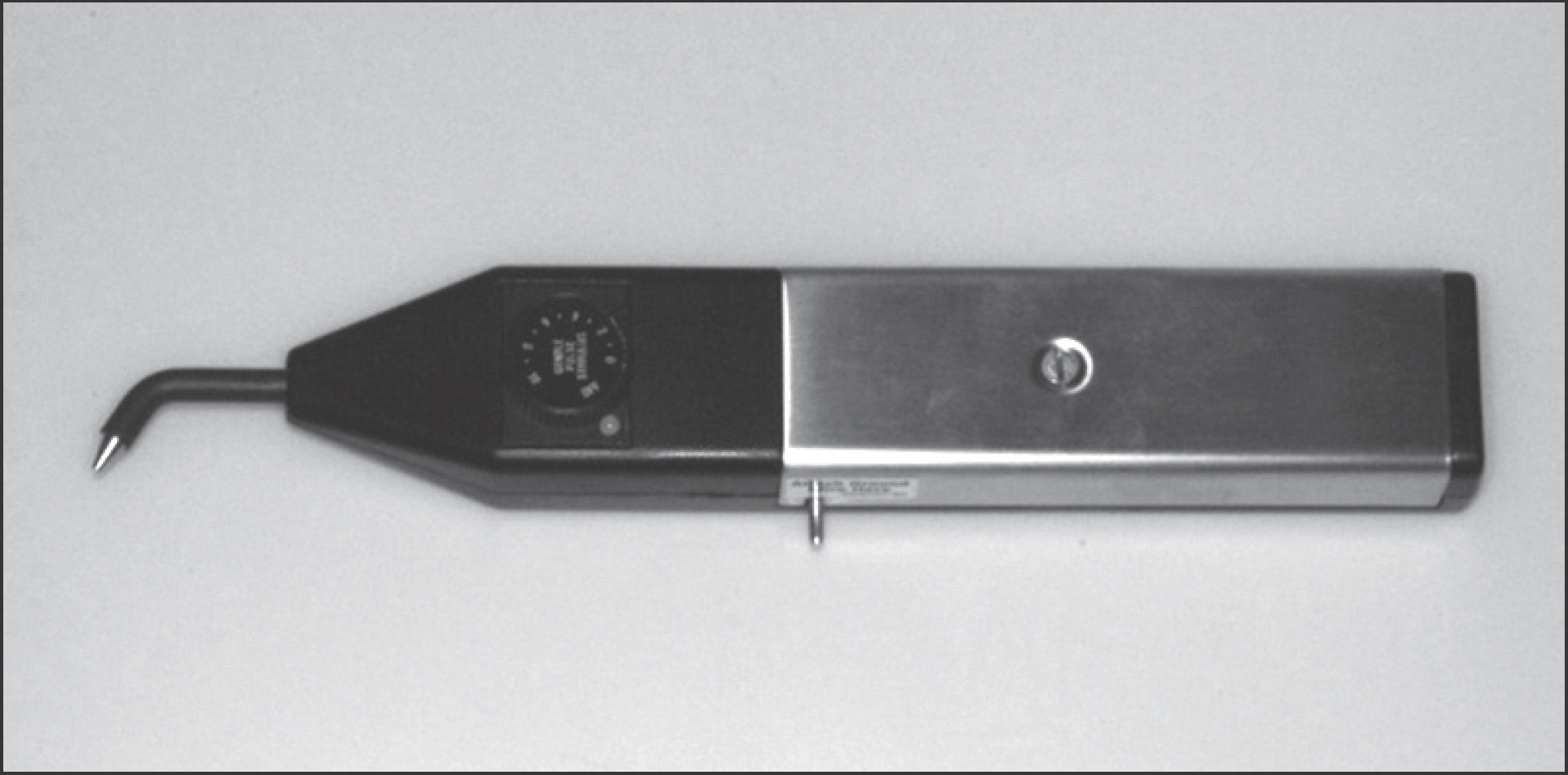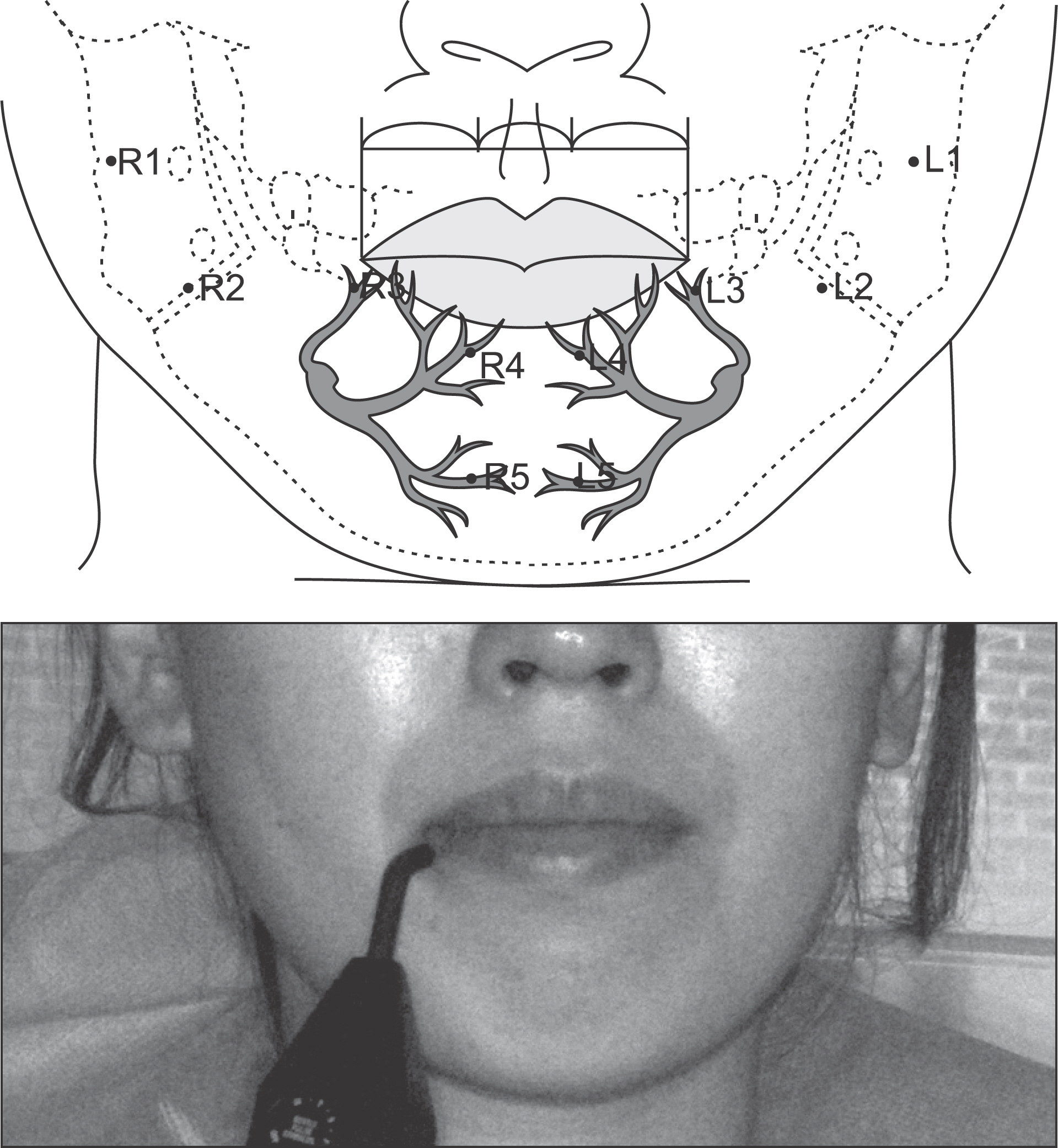J Korean Assoc Oral Maxillofac Surg.
2011 Dec;37(6):464-469. 10.5125/jkaoms.2011.37.6.464.
Evaluation of the change of lower lip sensation after inferior alveolar nerve block by using the electric pulp tester
- Affiliations
-
- 1Department of Oral and Maxillofacial Surgery, School of Dentistry, Kyungpook National University, Daegu, Korea. shalee@knu.ac.kr
- KMID: 2136982
- DOI: http://doi.org/10.5125/jkaoms.2011.37.6.464
Abstract
- INTRODUCTION
As dental implant surgery is becoming increasingly popular, it has become one of the causes for the hypesthesia of the inferior alveolar nerve, along with other surgical procedures, such as a third molar extraction. In addition, it tends to cause legal problems between the operator and patient. Therefore, there must be a proper method that is reliable, objective and economical to assess the nerve impairment. For this reason, an attempt was made to use an Electric Pulp Tester to assess inferior alveolar nerve block anesthesia.
MATERIALS AND METHODS
Thirty patients were tested. Electric pulp testing of the lower jaw skin was performed at the three different times, before anesthesia, at the onset of sensory changes and after 15 minutes waiting from the onset, and on the 10 points of the chin, which produced 10 sections on the skin area.
RESULTS
Twenty seven patients (90%) could feel the electric stimulus on the chin at all 10 points before local anesthesia and the scores represent the statistical differences between the right and left points except R4 and L4. After anesthesia, the difference between the right and left points (L3-R3, L4-R4, L5-R5) increased significantly with time but two points (L2, R2) showed no significant difference. The scores on the left chin (L3, L4, L5) increased, whereas the other points (R1-R5, L1, L2) showed no significant differences.
CONCLUSION
This study highlights the potential clinical use of an electric pulp tester for an assessment of inferior alveolar nerve impairment.
Keyword
MeSH Terms
Figure
Reference
-
References
1. Noma H, Sasaki K. Disturbance and regeneration of the inferior alveolar nerves. 1st ed.Tokyo: Ishiyaku Publishing;2001.2. Certosimo AJ, Archer RD. A clinical evaluation of the electric pulp tester as an indicator of local anesthesia. Oper Dent. 1996; 21:25–30.3. Yikontiola L, Kinnunen J, Oikarinen K. Comparison of different tests assessing neurosensory disturbances after bilateral sagittal split osteotomy. Int J Oral Maxillofac Surg. 1998; 27:417–21.4. Korean Dental Society of Anesthesiology. Dental Anesthesiology. 1st ed.Seoul: Koonja Publishing;2005.5. Ghali GE, Epker BN. Clinical neurosensory testing: practical applications. J Oral Maxillofac Surg. 1989; 47:1074–8.
Article6. Ghali GE, Jones DL, Wolford LM. Somatosensory evoked potential assessment of the inferior alveolar nerve following third molar extraction. Int J Oral Maxillofac Surg. 1990; 19:18–21.
Article7. Jääskeläinen SK, Teerijoki-Oksa T, Forssell H. Neurophysiologic and quantitative sensory testing in the diagnosis of trigeminal neuropathy and neuropathic pain. Pain. 2005; 117:349–57.
Article8. Kim YW, Kim MR. Diagnostic efficacy of DITI (Digital Infrared Thermographic Imaging) for the dysesthesia of the lower lip & chin. J Korean Assoc Oral Maxillofac Surg. 2002; 28:53–60.9. Lerner TH, Goldstein GR, Hittelman E. Quantitative sensory nerve conduction threshold (sNCT) evaluation of the trigeminal nerve at the mental foramen area. J Prosthet Dent. 2000; 84:103–7.
Article10. Kim JS, Nam KC, Kim SC, Lee SJ, Kim DW. Development of an electric pulp tester with constant current source. IEEK. 2004; 41:123–30.11. Dal Santo FB, Throckmorton GS, Ellis E 3rd. Reproducibility of data from a handheld digital pulp tester used on teeth and oral soft tissue. Oral Surg Oral Med Oral Pathol. 1992; 73:103–8.
Article12. Walline BW, Wagner JG, Marx DB, Reinhardt RA. Comparison of methods for measuring root and mucogingival sensitivity. Oral Surg Oral Med Oral Pathol Oral Radiol Endod. 2000; 90:641–6.
Article13. McDaniel KF, Rowe NH, Charbeneau GT. Tissue response to an electric pulp tester. J Prosthet Dent. 1973; 29:84–7.
Article14. Mikesell A, Reader A, Beck M, Meyers W. Analgesic efficacy of volumes of lidocaine in human maxillary infiltration. J Endod. 1987; 13:128.15. Vreeland DL, Reader A, Back M, Meyers W, Weaver J. An evaluation of volumes and concentrations of lidocaine in human inferior alveolar nerve block. J Endod. 1989; 15:6–12.
Article16. Nam KC, Ahn SH, Kim SC, Kim DW, Lee SJ. Measurement of the excessive stimulus time after the sensory threshold level during electric pulp testing. J Korean Acad Cons Dent. 2004; 29:226–32.
Article
- Full Text Links
- Actions
-
Cited
- CITED
-
- Close
- Share
- Similar articles
-
- Updates on the Inferior Alveolar Nerve Block Anesthesia
- Tooth hypersensitivity associated with paresthesia after inferior alveolar nerve injury: case report and related neurophysiology
- Diplopia after Inferior Alveolar Nerve Block Anesthesia: A Case Report
- A clinical study of anesthetic efficacy of alkalinizing lidocaine in inferior alveolar nerve blocks
- Facial blanching after inferior alveolar nerve block anesthesia: an unusual complication



